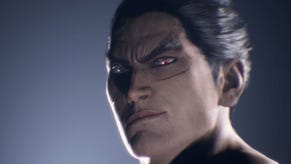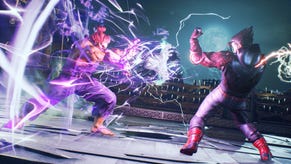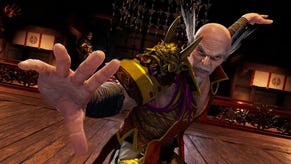Tekken 7 review
Rage against the Mashimas.
Let's get straight into it: Tekken 7 does a lot right. The core fighting system is as rewarding to master as ever and new mechanics benefit the game in useful ways. But it's what Tekken 7 doesn't do that drags the overall package down.
Tekken 7 retains the weighty and punchy feel the 3D fighting game series has benefited from over the years with a fighting system that's easy to pick up but hard to master. Just four buttons are used: one for each limb. It's a simple, elegant design that makes immediate sense to newcomers and facilitates a huge amount of depth.
Like all Tekken games, you can get a decent amount out of Tekken 7 by button mashing. (Eddy Gordo fans will find his kicks reassuringly effective once again.) But, like all Tekken games, Tekken 7 is as complex as you want it to be. Dig into the command list for any of the 38 playable characters (criminally, Lei Wulong is nowhere to be found) and you'll unearth near 100 moves and combos, each with their own properties, speed and damage. Tekken 7 is a lab fiend's dream, and, as always, practice makes perfect.
In a fight, Tekken 7 is mostly about prodding your opponent with attacks designed to open up their defence, perhaps blocking an attack you know you can punish with an attack of your own, or landing a counter-hit on your opponent (hitting them before their attack hits you), which can lead to a high-damage combo.
I have over the years played Tekken like a firefly, darting in and out of the 3D arenas with flicks of my fighting stick. But Tekken 7 has made sidestepping - one of the series' trademark movement options - less useful by slowing it down, so it's harder to dodge attacks for easy punishes. And damage output on long juggle combos has been reduced (heavy damage scaling) so that it's often better to go for a super powerful four-hit combo than it is a seven hit juggle that carries your opponent to the corner of the arena.
But as has been the case with Tekken for years, arena walls are hugely important. You get a damage bonus for slamming your opponent into the wall. So, do you go for a short but high damage combo, or a long but low damage combo that carriers your opponent to the wall? This is one of many layers of strategy those who put work into Tekken 7 will find fascinating to employ in a match.
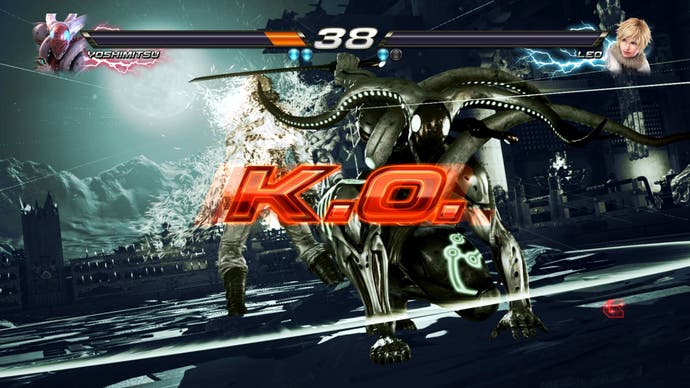
New for Tekken 7 is the Rage system. When your health bar nears its end, your character flashes red and Rage is active. This increases your damage, lets you perform a special Rage move as well as a high damage Rage Art. The Rage Art, which burns out your Rage status, is a bit like Street Fighter's super attacks. If you land one, the camera shifts about as your character performs an elaborate attack. Some of the Rage Arts are pretty cool, but most are just a flurry of punches and kicks. Tekken, which makes some attempt to recreate real life martial arts in a realistic fashion, has always been a more grounded game than some of its more fantastical fighting game rivals, so it follows that Rage Arts are grounded in reality, too.
The idea behind the Rage Arts is they're a dramatic comeback trigger, almost like a revenge attack. Clearly, Bandai wanted to make Tekken 7 more exciting to play and watch than previous entries in the series, and Rage Arts are an easy and fun solution. Purists may baulk at the "cheapness" of these high damage attacks, but the truth is their misuse can be countered pretty easily by high-damage punish combos. And the heavy damage scaling ensures the Rage Art is not a press a button to win situation.
Also new to Tekken 7 is the Power Crush, which I find more significantly changes the way Tekken plays than the Rage system. Each character has a few moves that have the Power Crush property, which means you can continue your attack even as you're being hit by a mid or high attack from your opponent. Essentially, you absorb enemy attacks - taking damage in the process - before smashing your opponent. Having Power Crush at my disposal makes me much more aggressive. I'd play previous versions of Tekken in an almost standoffish way, darting this way and that as I jostled for position and an opportunity to punish. With Power Crush I can get stuck in and not worry too much about it.
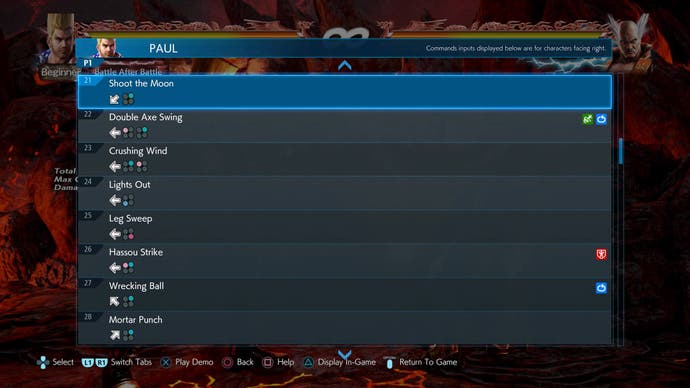
Worthy of note is the new Screw Attack mechanic, which replaces the bound system from previous games. Screw Attacks make enemies spin sideways when they're hit airborne, and let you land additional attacks when they hit the ground. Unlike the bound attack, Screw attacks cannot be used to extend a wall combo, which counters their potency. But they are possible after wall, balcony and floor breaks. The idea, clearly, is to make the combo extender look cooler (the Screw Attack animation is much better than the bound animation), but reduce their potency somewhat. I get the impression this, combined with the damage scaling, is an attempt to level the playing field, giving those who can't do long, complex combos a fighting chance at doing decent damage.
Rage Arts, Power Crush and Screw Attacks combine to give Tekken 7 a more dramatic feel than previous versions. The combat really is satisfying, with an impressive weight and punchiness. I love the way the game slows down during trades and close calls, and how Power Crush attacks fill the screen with particle effects. Tekken 7 is perhaps the most exciting Tekken ever from a visual standpoint. The graphics won't blow anyone away, but they're good for Tekken, which is good enough for me.
So, it's safe to say Tekken 7 is fantastic fun when it comes to the competitive side of things, but it's not a significant step forward for the series (there are plenty of combos that worked in Tekken 3 that work exactly the same in this game). Casual Tekken fans - even those who have spent a decent amount of time with the franchise - will be hard-pressed to notice much different about the way Tekken 7 works compared with Tekken 6. In short, I don't think Tekken 7 is all of a sudden going to spawn a new Tekken fanbase. It seems designed to appeal to those who already like Tekken, or perhaps those who played it years ago and fancy giving it a shot on their current generation console.
Unfortunately, when it comes to the single-player side of things, Tekken 7 falters compared to its fighting game rivals.
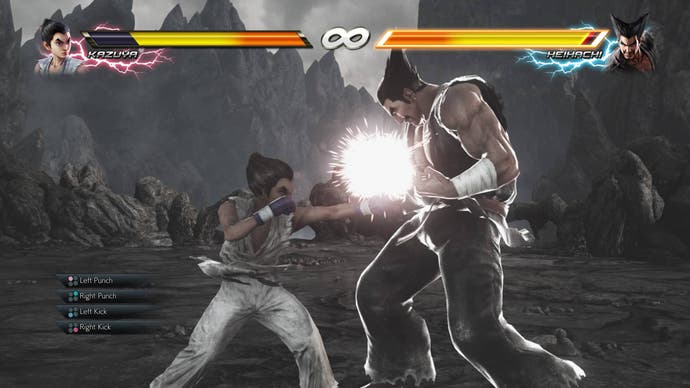
Tekken 7 includes a story mode that's as infuriating as it is throwaway and it has one big problem: the bits where you actually fight are awful. Each time you fight you have to defeat an opponent, or a series of opponents (grunts or loads of Jacks) over the course of a few rounds, but if you lose one round you have to start the chapter over. If you're big into Tekken 7, playing on the normal difficulty won't be a problem, but if you're a newcomer, a casual fan or even a lapsed fan, story mode can be a frustrating experience.
So, drop the story difficulty down to easy, right? This lets you perform special moves and combos by mashing a single button, which is useful and will get you through the whole thing, but it's not a fun way to play Tekken 7, and, crucially, does not help teach the player how to play. All it does is help you get better at mashing a button during story mode. It's mindless and just not that interesting.
The disappointing story mode is indicative of Tekken 7's single-player, which I'm sorry to say is a let down. Once you're done with the story mode, all that's left to do is play arcade mode, the pointless VR modes if you have a PSVR, or Treasure Battle and grind Fight Money to unlock customisation items. Treasure Battle is, essentially, an endless fight against various computer opponents. You can rank up as you play, earning blind loot boxes that include new bits for the characters, such as sunglasses, T-shirts and of course hats, or buy stuff with your in-game currency.

I actually had a decent amount of fun with the character customisation side of Tekken 7, and enjoyed dressing my Ling Xiaoyu out in increasingly bonkers clothes and accessories. There's a huge amount to customise across the board. You can unlock everything from new health bars to new items you wear on your back (I picked a pizza because why not?). At the very least, customisation gives you something to shoot for on the single-player side of things, but for me the real benefit is adding variety to online play. There's so much to unlock, you're unlikely to see the same look twice online, and there's a lot of scope to made your player card stand out.
Treasure Battle, however, doesn't really cut it. In a post-Injustice 2 world Tekken 7 feels archaic. At times I was willing to forgive Tekken 7 its failings because it's such a fun fighting game. For someone like me who focuses on the multiplayer side of the genre, it's an absolute beast. But it has to go down as a relatively small step forward for the series - and a pretty underwhelming package. NetherRealm has shown what can be done to make the genre appeal to those who don't fancy getting torn to shreds online. Unfortunately the developers at Bandai Namco's Tekken team seemingly failed to notice.


